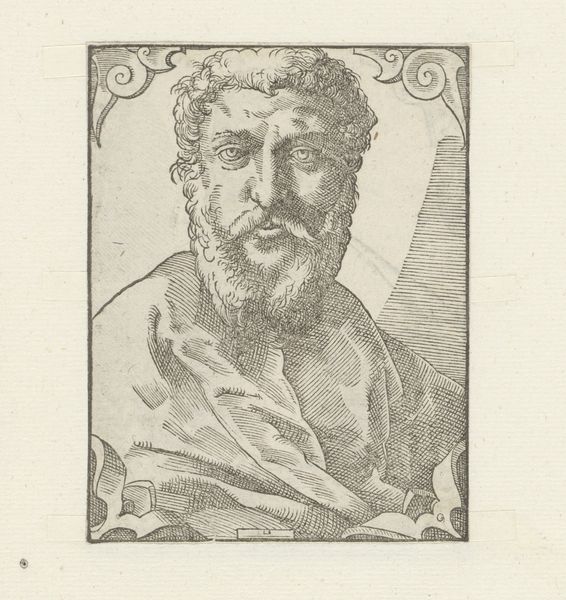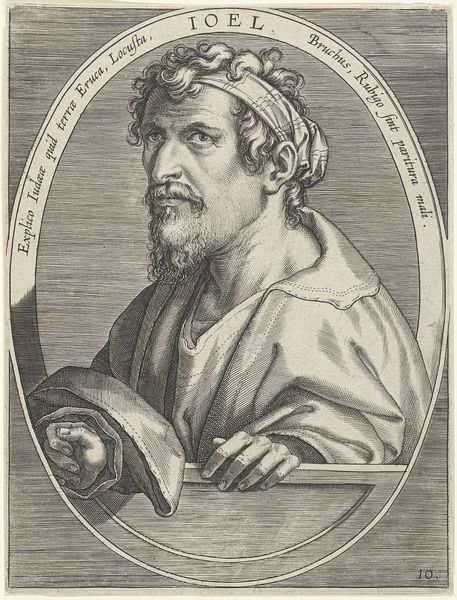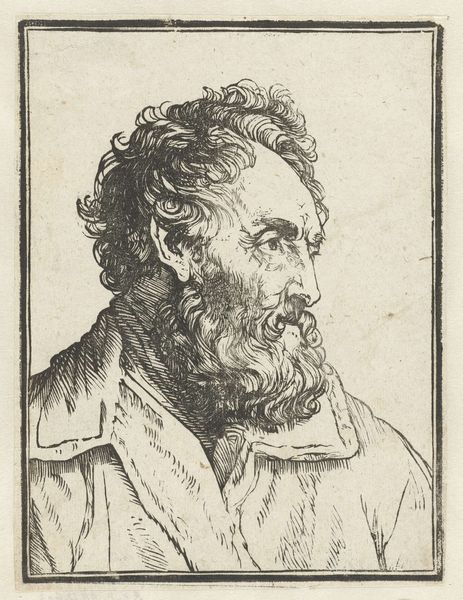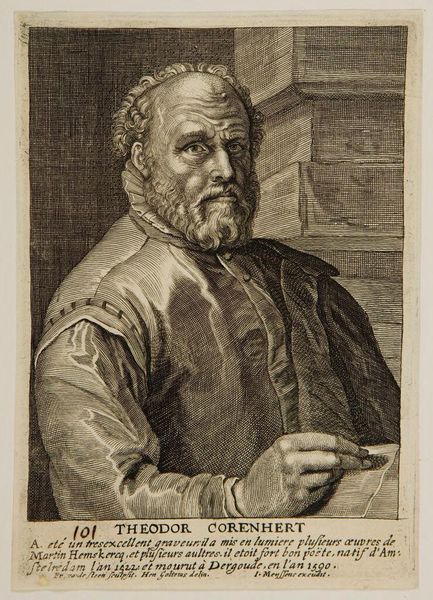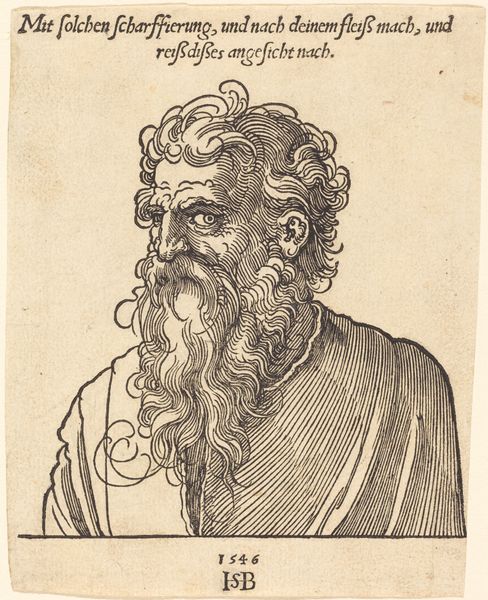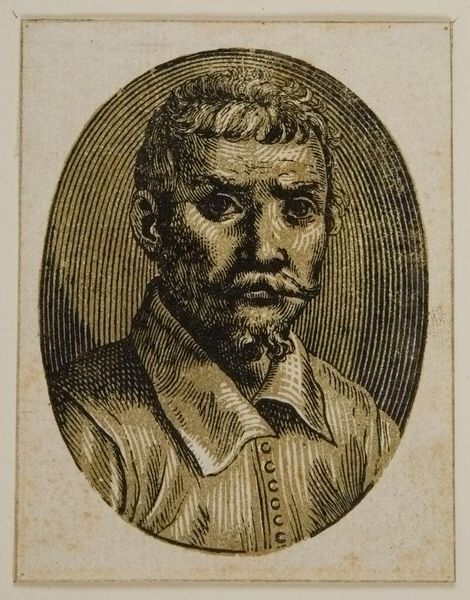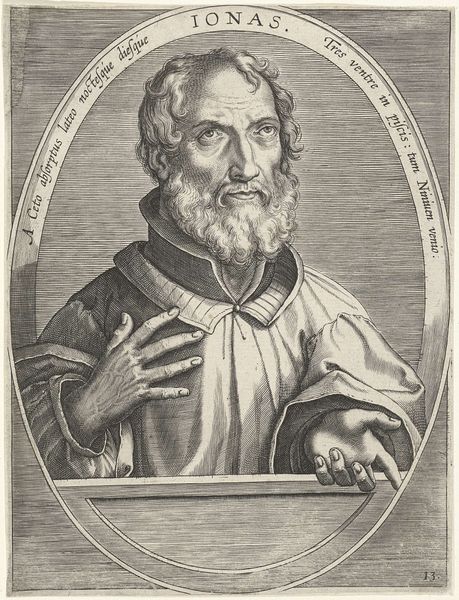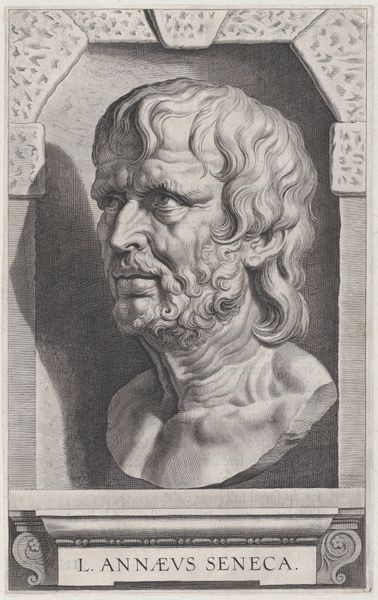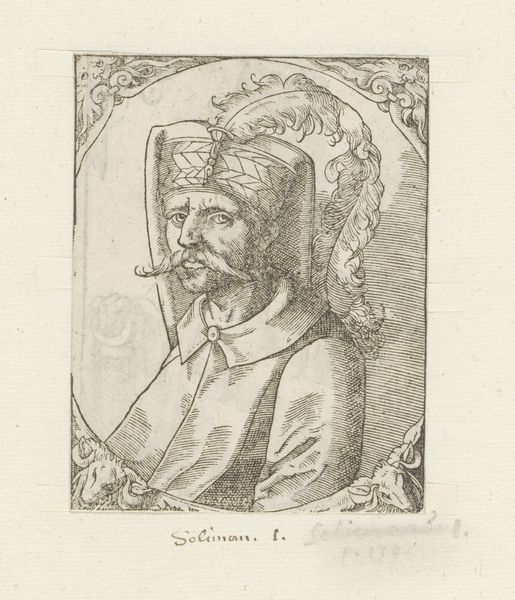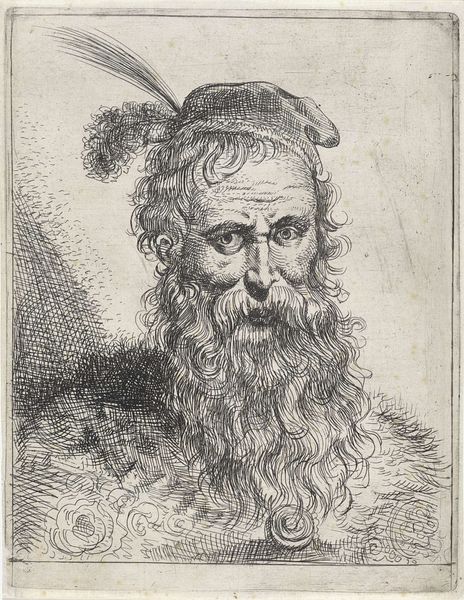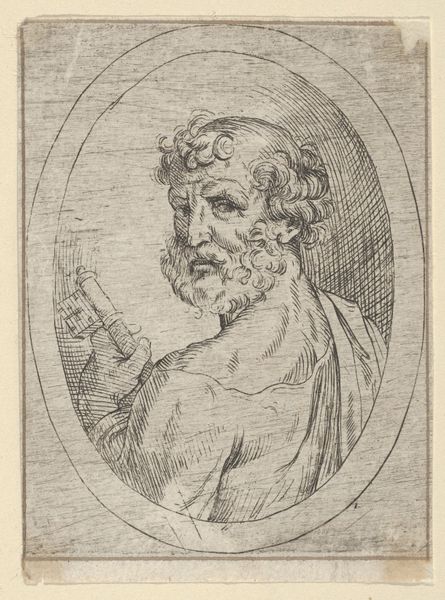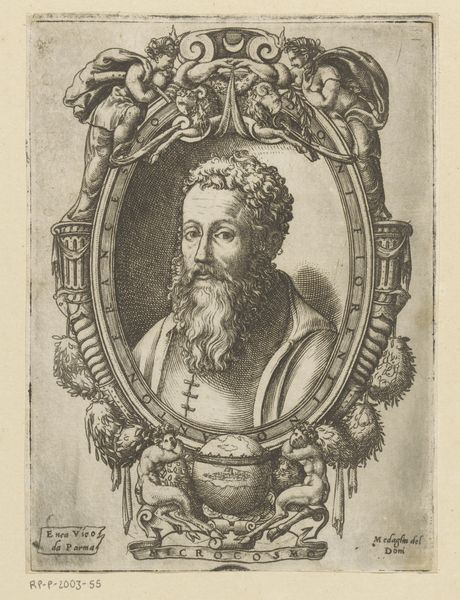
Copyright: Public domain
Lucas Cranach the Elder made this print of Martin Luther as Junker Jörg with woodcut, an accessible medium for spreading ideas widely. The image shows Luther in disguise, during his exile at Wartburg Castle. Woodcut is a relief printing process, where the artist carves an image into a block of wood, leaving the design raised. Ink is applied to the surface, and then paper is pressed against the block, transferring the image. Look closely, and you can see the linear quality of the design, determined by the grain of the wood and the tools used to carve it. The texture of the paper also plays a role, absorbing the ink and adding to the print’s overall character. Inexpensive prints like this one played a crucial role in the Reformation, disseminating images and ideas to a broad audience. The work involved in the woodcut process – from the labor of carving the block to the mechanics of printing – reflects the democratizing impulse of the Reformation itself, challenging established hierarchies of both religious authority and artistic production. It is a perfect example of what happens when art and the means of production meet.
Comments
No comments
Be the first to comment and join the conversation on the ultimate creative platform.

